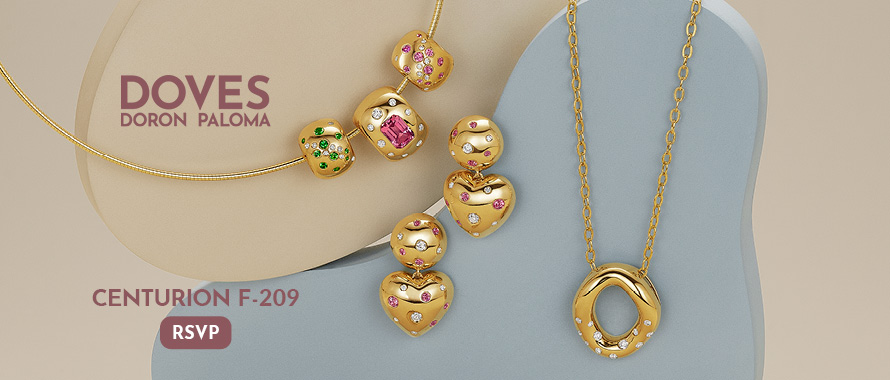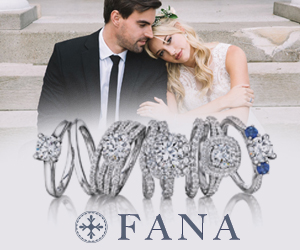Sales Strategy
Purple Passion! Pantone’s 2018 Color Of The Year Will Be An Easy Sell | December 20, 2017 (2 comments)
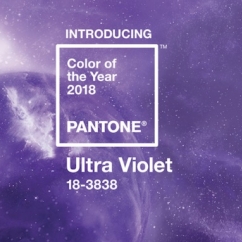
New York, NY—Aquarians and amethyst lovers everywhere, rejoice! The Pantone Color Institute recently named “Ultraviolet” as its Color Of The Year for 2018. The color, assigned the Pantone number 18-3838, is a blue-based purple that Pantone says “communicates originality, ingenuity, and visionary thinking that points us toward the future.
“Complex and contemplative, Ultra Violet suggests the mysteries of the cosmos, the intrigue of what lies ahead, and the discoveries beyond where we are now. The vast and limitless night sky is symbolic of what is possible and continues to inspire the desire to pursue a world beyond our own.”
But what does that mean for jewelers at the sales counter? For one thing, purple flatters almost all skin tones, depending on the undertone. Some consumers will favor a blue-based purple, such as Ultraviolet, while others may prefer a more red-based purple or a lighter lavender shade. Either way, there are lots of gem choices for jewelers to satisfy any purple passion.
Another advantage for jewelers is that there's beautiful purple gemstone jewelry in every budget category. Amethyst is the obvious, of course, but there's purple sapphire, purple tourmaline, purple topaz, purple chalcedony, and of course the rare purple diamond. But unlike, say, emerald (Pantone's Color Of The Year in 2013), where it's hard to get a really beautiful stone without spending significant money, customers don't have to bust the budget to walk out with an important-looking amethyst. Yet those who want to invest can be part of the elite few to own an incredibly rare purple diamond such as the Argyle Violet, a 2.83-carat bluish purple valued at approximately $3 million.
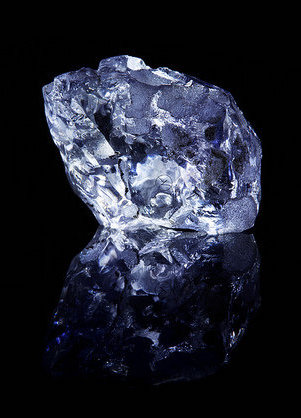
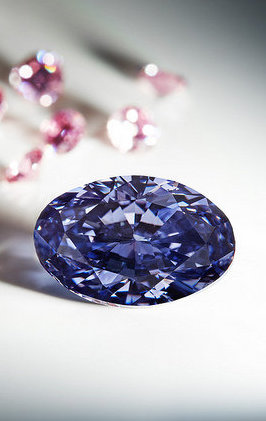
Pantone approved: The Argyle Violet, rough (left) and polished, is a blue-based purple diamond valued at slightly more than $1 million per carat.
Enigmatic purples have also long been symbolic of counterculture, unconventionality, and artistic brilliance, says Pantone. It was a favorite color for such musical and cultural icons as Prince, David Bowie, and Jimi Hendrix. Purple historically also is associated with royalty—so much so that Britain’s Queen Elizabeth I forbade anyone but royalty or close relatives of the royal family to wear it.
The color’s elite status in history evolved because purple dye was so costly and hard to obtain that that only extremely wealthy rulers could afford purple fabric, making it literally worth its weight in gold. Early purple dye originated with mollusks that lived in one small section of the Mediterranean Sea, near the Phoenician city of Tyre, in what today is Lebanon. It took thousands of mollusks to generate just a few ounces of the dye (where have we heard that kind of proportion before?) so wearing it signified both social and financial status.
Purple also is associated with the period of Lent, partially because of its affiliation with royalty, and in celebration of Christ’s resurrection and sovereignty, but it also was associated with mourning and anticipates Christ’s suffering during crucifixion.
But the color became available to the masses in the mid 19th century. In 1856, an English chemist named William Henry Perkin accidently created a synthetic purple compound while attempting to synthesize quinine, an anti-malaria drug. Once he realized his compound could be used to dye fabrics, he patented it and manufactured it, growing extremely wealthy himself.
Purple is often associated with mindfulness practices, a trend growing increasingly popular in today’s high-stimulus world. It’s common to see purple-toned lighting or walls in meditation spaces, yoga studios, or other mindfulness gathering places.
In gem lore, the ancient Greeks believed amethyst was a talisman against drunkenness. Legend says that the Greek god Bacchus, in a fit of pique over some imagined slight from the goddess Diana, vowed to set his tigers loose upon the next person he met. That was the hapless maiden Amethyst, whom Diana then turned to a pillar of stone to save her from being devoured alive. When Bacchus came upon the frozen maiden, in remorse he poured a glass of wine over her, turning the stone purple forevermore.
But amethyst carries spiritual overtones for many other cultures. It’s often viewed as a stone of peace, and is thought to be a calming, soothing gem that produces soothing dreams and chases away nightmares. Amethysts are said to help the mind flow freely in both mental and metaphysical dimensions—something Pantone alluded to in its reference to the color—and indeed it is a favorite stone for many psychics to keep at hand.
Here’s a small selection of purple gemstone jewelry:
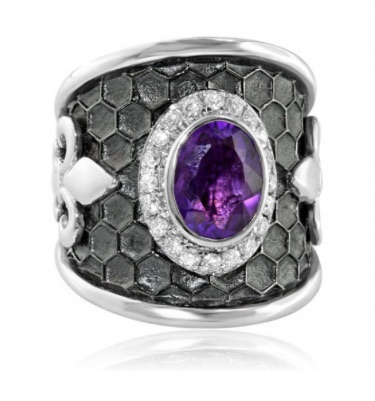
Antiqued silver and 18k yellow gold Etruscan ring with 0.25 ctw of white diamonds and a 3.80-carat amethyst. Eli Jewels.
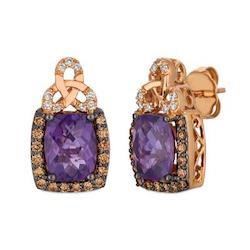
14k Strawberry Gold and Grape Amethyst earrings with accents of Chocolate Diamonds (0.33 ctw) Vanilla Diamonds. Le Vian.
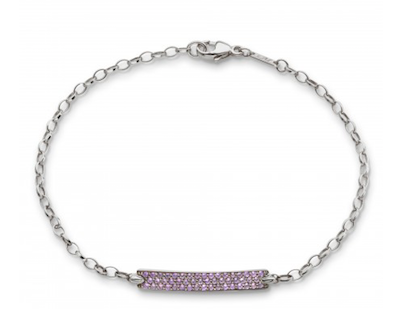
Carpe Diem amethyst poesy bracelet in 18K white gold. Monica Rich Kosann.
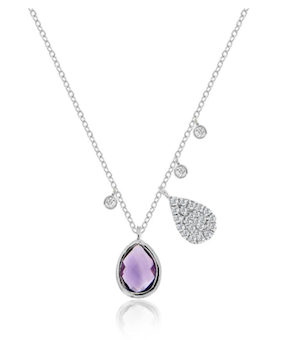
Purple Topaz Drop Necklace, MeiraT.
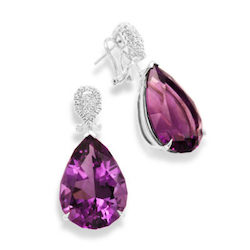
Frederic Sage’s 18k gold “Wink” earrings are one-of-a-kind with large pear shape amethysts (50.94 ctw) and approximately 0.35 ctw of diamonds.
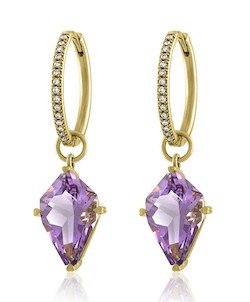
18k yellow gold and diamond hoops have kite-shaped amethyst detachable drops. Lisa Nik
